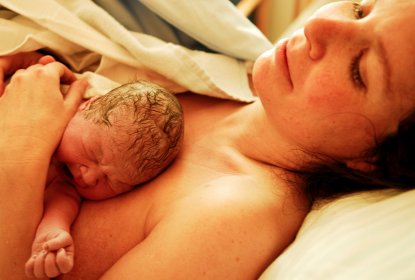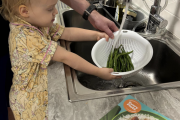Comfort Measures for Labour


Inevitably, one of the things most pregnant women want to know about labour and birth is… how much is it going to hurt and how am I going to manage the pain?
As a modern society, we have become accustomed to dealing with pain and discomfort by finding a “quick fix” for it. We have also come to associate pain in labour in much the same way. It is not uncommon for hospitals with large maternity units to have in excess of an 80% epidural rate today, which says an awful lot about how women have become conditioned to believe that they are incapable of managing pain in labour by using non-pharmacological methods of pain relief.
Over the years, labour and birth has become increasingly medicalised and this is reflected in the ever spiralling induction, intervention and Caesarean rates. Many women today simply don’t believe that their bodies are perfectly designed to birth their babies with the minimum of intervention.
One of the first things I like to discuss in my childbirth education classes is the very notion of pain in labour and try to get women and their partners to look at it quite differently from the way we’re used to. Imagine, if you will, that the word “pain” is in fact, an acronym;
Purposeful – labour pain has a purpose – to guide your baby through the birth canal. It also signals the release of stress hormones and endorphins.
Anticipated –We KNOW in advance that we will experience some degree of pain and therefore we can anticipate it and develop strategies to cope with it.
Intermittent – Pain in labour is not like an injury where the pain is continuous. Labour pain DOES have breaks – all the way through – and we can learn to make the most of these breaks to rest.
Normal – we must remember that this pain is normal and natural. It’s not a sign that something is wrong (unlike pain caused by injury) – it is sign that something is very right! Don’t forget, our bodies were designed to give birth!
The next thing I talk about are the huge variety of comfort positions and aids a woman can use during her labour. Renowned childbirth educator Penny Simkin talks about “The 3 R’s” – Relaxation, Rhythm and Ritual and many studies have shown that women who use a variety of these during her labour experience significantly less pain and discomfort in labour than women who do not. Examples of relaxation include adopting breathing techniques suited to various stages of labour, or meditation and other forms of deep relaxation and vocalisation.
Rhythm is all about finding comfort in movement – be in sitting on a birth ball and rotating rhythmically during contractions, or taking it into the shower with you where you have the additional benefit of a powerful stream of hot water on your back or your belly. Rocking, swaying, slow dancing, walking and climbing stairs are all beneficial. The movement both decreases your perception of pain and also assists your baby to move into an optimal position in the pelvis. Use of heat and cold as well as hydrotherapy are all strongly backed up by evidence for dramatically reducing women’s perception of pain during labour. If a woman has access to a bathtub or birthing pool she should definitely take advantage of it – although submerging in warm water will be most beneficial in active labour (going into a bath too early on in the labour will likely slow down labour). Sometimes a woman prefers something cool to comfort her and so her partner can rub a cool hand cloth over her, or wrap a cold can of soda in a cloth and roll it firmly up and down her back. Massage is also usually strongly welcomed by the laboring woman – often on her lower back.
Ritual is simply the ritualistic repetition of these movements combined with the comforting aid of cool, heat, water and touch. Each woman will find her own unique combination that works best for her and the woman who varies her movements and comfort measures frequently will benefit most greatly. A woman should also drink and eat as frequently as she feels the need or desire to do so.
On top of these beneficial techniques, it’s important not to forget the most important comfort aid of all – the love and support of a woman’s partner. Continuous support in labour is critical for a woman to feel supported and keep her confidence levels high.
Finally, here are some excellent online resources you might like to read:
Lamaze Healthy Birth Practice #2: Walk, Move & Change Positions
Lamaze Healthy Birth Practice #3 Continuous Support in Labour
(Both are great articles with videos)
http://www.lamaze.org/HealthyBirthPractices
Penny Simkin – Comfort in Labour
http://www.childbirthconnection.org/pdfs/comfort-in-labor-simkin.pdf
Tanya Strusberg is a Lamaze Certified Childbirth Educator (LCCE) and teaches prenatal education to pregnant women and their partners in Melbourne.
She and her husband Doron have two beautiful children, Liev and Amalia.
To learn more visit www.birthwellbirthright.com










